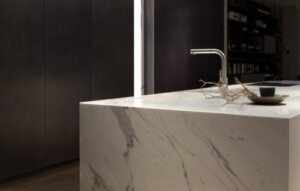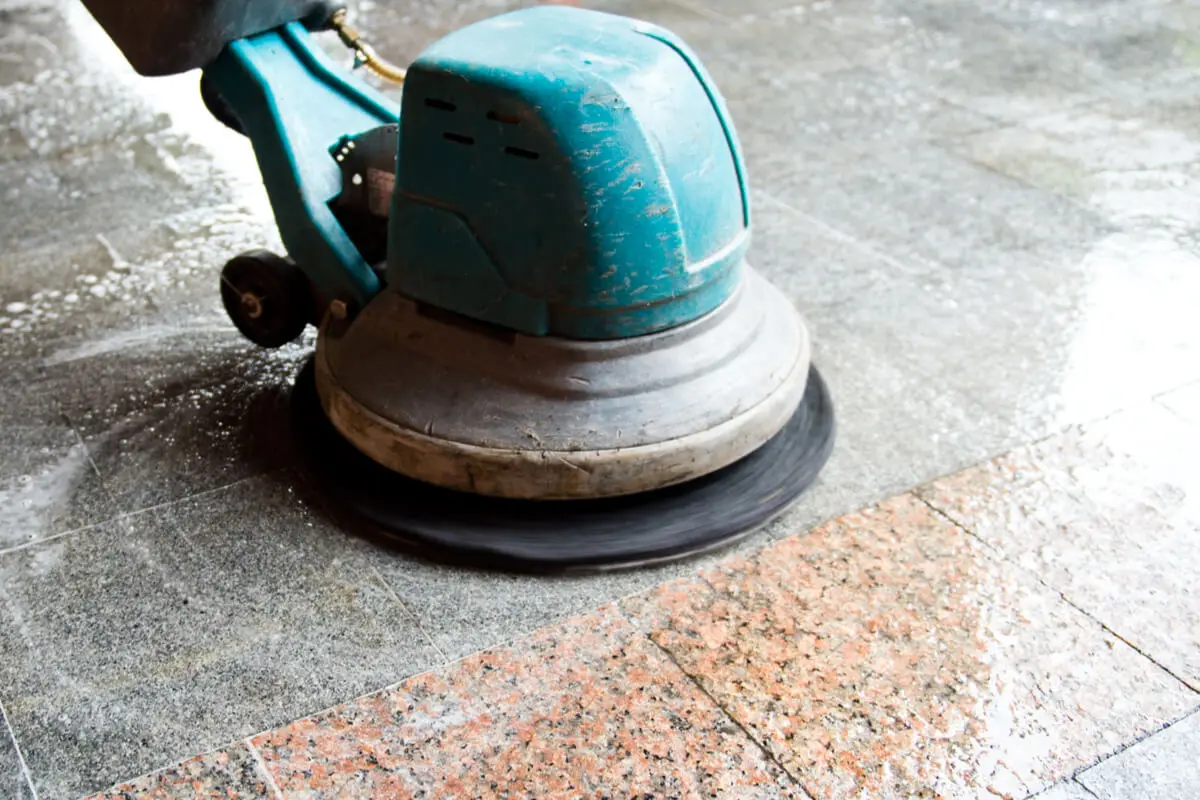Travertine Marble: The Advantages and Uses in the Home

Travertine marble leads us, almost automatically, to elegant and sophisticated spaces, both indoors and outdoors. It’s a material that has been used for centuries, and its resistance has made it a symbol of the world of architecture and decoration.
In this article, we will be taking a look at the origin and characteristics of travertine marble. We’ll also take a look at its advantages and some of its uses.
Where does travertine marble come from?
As its name suggests, this type of marble comes mainly from the Italian region of Travertine, where it’s extracted from quarries. It’s always been linked to luxurious and classic-style environments. However, nowadays, its use has spread, and it can be seen in any kind of house.
As for its characteristics, it’s a limestone and porous stone, with a quite smooth finish. The predominant tones are light yellowish to pastel, which come from the remains of sulfur and other iron compounds and organic pigments.
Its main components are calcite and gypsum. Most of its constituent minerals are colorless. That’s why it has a clarity of base and veins.
If we talk about the finishes, we can mention a natural one, in which the porosity of the stone in its natural state is not hidden and gives a rustic appearance. On the other hand, if it’s polished, the shine of the marble can be seen, which brings a touch of elegance and brightness.
We think you may be interested in reading this, too: Eco-Friendly Decoration: Sustainable Ways To Decorate Your Home
The advantages of travertine marble
There are many benefits of this type of natural stone if we decide to incorporate it in the rooms of our home. Let’s take a look at some advantages.

Resistance
This is one of its main advantages. If we take into account that the structures made with this marble have centuries of life and are still standing, we can be sure that it’s a resistant material!
It doesn’t deteriorate with the sun, rain, or wind, so its use in outdoor spaces is more than wise. It also resists bending, temperature changes, and even humidity. This resistance gives it excellent durability.
Beauty
Beauty is a major advantage because nothing else is needed to decorate a travertine marble floor or countertop. Its tones and natural veins speak for themselves. An environment containing this stone will feature elegance and delicacy.
Easy cleaning
Marble is easy to clean, as it doesn’t require any type of chemical product. Ammonia is very abrasive and could damage the stone. The best way to clean travertine marble is with water and neutral soap.
Anti-slip
Its high porosity gives it the characteristic of being anti-slip. This is not a minor detail, since it makes it a very convenient option for outdoor flooring and pool edges.
Like this article? You may also like to read: Five Ideas to Decorate Your Living Room with Recycled Materials
The uses of travertine marble
As we mentioned, this natural stone can be used both outside and inside the home, thanks to its versatility. Which one will you choose for your home?
Floors
Marble floors, besides being sophisticated, are timeless. We’ve already talked about their durability. Not only are they easy to clean, but they also provide safety because they’re non-slip. On the other hand, the shine and clarity that such a floor brings to an environment are highly sought-after qualities.
Walls
Both in kitchens and bathrooms, the walls can be covered with travertine marble instead of the classic tiles. It’s worth the change because the end result will be a bright, luxurious, shining space.
Countertops
Here, it can also be applied to the kitchen countertop and the bathroom sink. One of its advantages is that since this type of marble has light and neutral tones, it combines well with any accessory you may want to add.
Accessories
Finally, we can find tables, side tables, night tables, bars, breakfast tables, and kitchen islands, among other furniture for the home. Just make sure to keep in mind the weight of the final product.
In exteriors
In addition to being used on gallery floors and pool edges, it’s often used to cover facades. It’s important to highlight the coating of walls with travertine marble, as it’s resistant to any weather conditions.

Travertine marble is a perfect choice for the home
This natural stone is very versatile and can be used in almost any space in the house. Its use is reminiscent of elegant environments, with minimalist tones and Nordic elements.
The only disadvantage it may have is the cost, although in reality, its durability and resistance, as well as almost no maintenance, compensate for its price. We hope you can introduce it in your home and achieve the stylish change you’re looking for!
All cited sources were thoroughly reviewed by our team to ensure their quality, reliability, currency, and validity. The bibliography of this article was considered reliable and of academic or scientific accuracy.
- Sarabia-Bañuelos, P., & Nolasco-Arizmendi, V. A. (2021). Piedra caliza de mármol Travertino Romano la columna piedra natural. Mundo nano. Revista interdisciplinaria en nanociencias y nanotecnologÃa, 14(26).
- Huertas, B. S. (2005). El travertino rojo de Mula (Murcia). Definición de un mármol local1. REGIÓN DE MURCIA, 141.
- Trujillo Rodríguez, C. L., Velasco De La Fuente, D., Figueres Amorós, E., Garcerá Sanfeliú, G., & Guacaneme Moreno, J. (2012). La Plaza de último diseño travertino Natural mosaico de mármol beige amarillo. Tecnura, 16(32), 12-28.
- Vásquez, W., & Vizcarra, M. (2008). Proceso industrial de una planta de tratamiento de mármol travertino. Barcelona: Ediciones CEAC.
- Burgos, L., & Bogotá Ruiz, J. (1986). Instalación de acabados en piedra y mármol.
- Gomero, C., & Gustavo, E. (2013). Fabricación de recubrimientos orgánicos a partir de residuos de la producción de mármol.
This text is provided for informational purposes only and does not replace consultation with a professional. If in doubt, consult your specialist.








